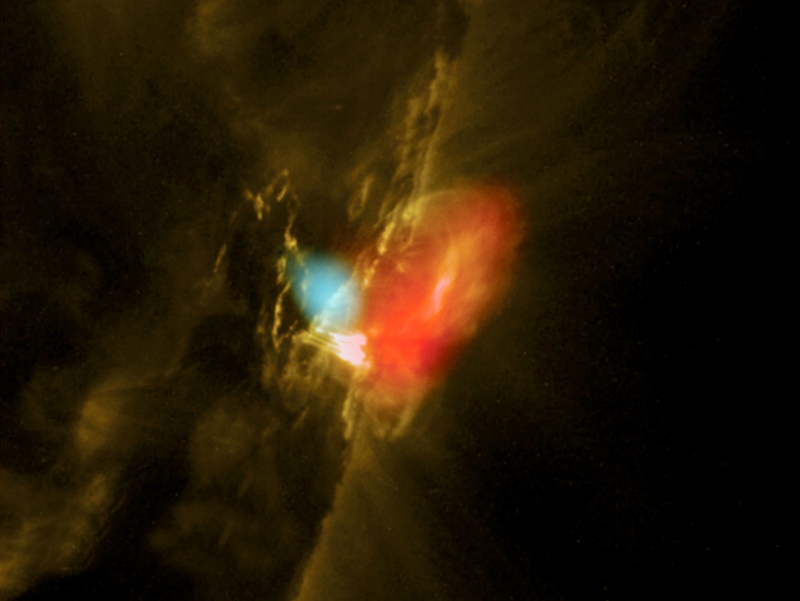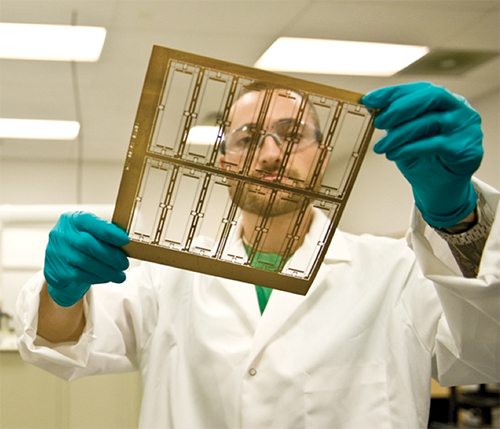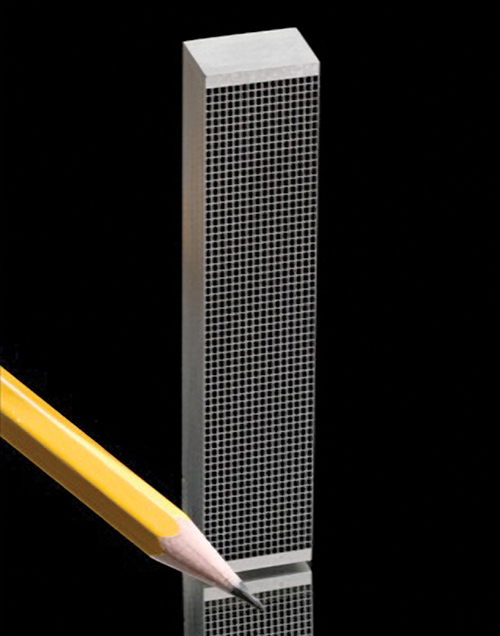
Tooling Techniques Enhance Medical Imaging
NASA Technology
They can release as much energy as tens of billions of hydrogen bombs exploding at the same time. They send protons and electrons rocketing at near the speed of light. They heat gas in the Sun’s atmosphere to tens of millions of degrees Celsius. They send a blast of gas and particles toward Earth, posing a danger to spacecraft and astronauts outside the planet’s magnetosphere, in rare cases even knocking out radio communications and power grids on the ground.
They are so-called solar eruptive events, made up of solar flares and the often associated coronal mass ejections.
Because of the scientific mystery of how these solar eruptions are produced on the Sun with such scale and force, and also the major role they play in space weather that can impact life on Earth, NASA researchers have innovated new methods of gathering information about these violent events.
One NASA mission, the Reuven Ramaty High Energy Solar Spectroscopic Imager (RHESSI) has significantly advanced understanding of solar flares since its launch in 2002. RHESSI scientists use the spacecraft’s imaging spectrometer to piece together pictures of solar flares from the high-energy X-ray and gamma-ray radiation they emit. While there is still much to be learned, data gathered by RHESSI has revealed how magnetic fields in the vast expanse of the solar atmosphere may be the force that drives the immense explosions. The instrument has imaged around 50,000 flares to date, providing information that may explain not only the workings of solar flares but also of much more massive energy releases from distant objects like black holes and quasars.
“We have been able to make images from X-rays with much finer resolution and greater sensitivity than have ever been made before,” says Brian Dennis, RHESSI Mission Scientist and astrophysicist in the Solar Physics Laboratory at Goddard Space Flight Center.
The key to RHESSI’s unprecedented capabilities lie in a set of essential components a NASA partner created for the mission. The manufacturing techniques developed to create the components have yielded innovations advancing medical imaging, transportation security, and even energy efficiency.
Partnership
To gather its groundbreaking imagery, RHESSI’s spectrometer was outfitted with metal grids incorporated in devices called rotation modulation collimators (RMCs). As the spacecraft rotates, the grids block and unblock X-rays emanating from the Sun. The instrument’s detectors record the modulated radiation passing through the grids and transmit the information to the ground, where scientists generate images using computers. For this setup to function effectively, NASA needed the most finely crafted grids yet created. A number of attempts to create the technology failed until engineer Mike Appleby, working at a company called Thermo Electron Tecomet, was able to meet NASA’s requirement, producing grids using photoetched tungsten foils built up into precise stack laminations.
“Finding Mike Appleby was the real secret,” says Dennis. “Collaborating with him allowed us to do this mission.”
Appleby founded Mikro Systems Inc., based in Charlottesville, Virginia, in 2000 to build upon the unique lithography-based manufacturing platform he used to craft the RHESSI grids. Mikro partnered with NASA through the Small Business Innovation Research (SBIR) program to improve the company’s platform for producing even finer, more complex grids for future space imaging missions.
Benefits
Now in its 11th year of operation, Mikro Systems has fully developed its patented TOMO lithographic molding technology and, according to Appleby, Mikro’s president and CEO, is applying the lessons and techniques the company derived from its NASA work to manufacturing advanced products for multiple markets.
The TOMO process starts with a 3D computer model of the part to be created. The model is sliced into thin layers ranging from 25–200 microns in thickness. Using photomasks created from the layers, a chemical machining process is applied to etch each layer in thin metal foils. The layers are then bound together using stack lamination and epoxy to create a master pattern. The pattern serves as the basis for a mold then used to cast the products. With this process, says Appleby, Mikro can cast ceramics, powdered metals, polymers, and composites with high precision and at low cost.
One of the company’s main markets developed from its NASA collimator work. Just like the RHESSI instrument, X-ray-based medical imaging machines require collimators, also known as antiscatter grids. These grids, typically made of tungsten or molybdenum, sit between the X-ray source and the detector. As the X-rays pass through the body, some are scattered; the grid absorbs the scattered radiation while allowing the unscattered X-rays to pass through, ensuring a clean image for doctors to study.
Using the TOMO process, Mikro now creates unique collimators for computed tomography (CT) machines used to image injuries and other conditions in regions like the brain, heart, and lungs. These collimators are two-dimensional grids—as opposed to the standard one-dimensional collimator—a device that was not possible to create prior to the innovation of the TOMO process, Appleby says. The 2D grid provides significant benefits including improved scatter rejection (and thus better imaging) and enhanced strength. These features are key to newer CT machines that move the detector-carrying gantry around patients at higher speeds and produce more comprehensive imagery. The advanced qualities all come at a reduced cost; the TOMO process uses powdered tungsten instead of tungsten foil to create the grids, lowering material expenses from between $300–$500 a pound to around $20 a pound.
In addition to the medical imaging applications, Mikro’s collimators are currently used in a high-resolution scanner for airport security screening, and Mikro is also applying the TOMO process to the production of blades for gas turbine engines used for aircraft propulsion and energy generation. The hotter a turbine engine runs, the more efficiently it operates, so effective methods for managing the engine’s heat are essential to boosting efficiency. The TOMO process allows Mikro to cast blades containing finer and more complex cooling passages than previously achievable. At the same time, TOMO reduces the cost of the tooling process by one third and shortens the time involved from between 30–40 weeks down to 4–6 weeks. Mikro is currently working with major firms like Siemens Energy to advance the technology for energy-generating industrial gas turbines.
Launched with three employees, Mikro now has 40, including 15 recent hires to support the company’s medical imaging efforts. The company’s turbine work is growing even faster, and all of this success can be traced back to Mikro’s NASA collaboration, says Appleby.
“We are always proud to accomplish something on the cutting edge,” he says. “This is the privilege we have in working with NASA and other Government agencies.”
Dennis says that Mikro’s new etched grids, smaller but more complex than those used for RHESSI, are essential for enabling the Solar Telescope for Imaging X-rays (STIX) to be flown on the Solar Orbiter, a joint NASA/European Space Agency mission that will venture within the orbit of the planet Mercury to obtain a close-up look at the Sun. It seems a NASA partnership will once again play a role in drawing back the veil on the Sun’s mysteries.

A Mikro Systems Inc. employee holds a layer of a TOMO tool.

Mikro’s NASA-derived TOMO process allows for the manufacturing of new medical imaging components, like this 2D antiscatter grid.

A solar flare is imaged by RHESSI in conjunction with two other NASA spacecraft, SOHO and TRACE.













